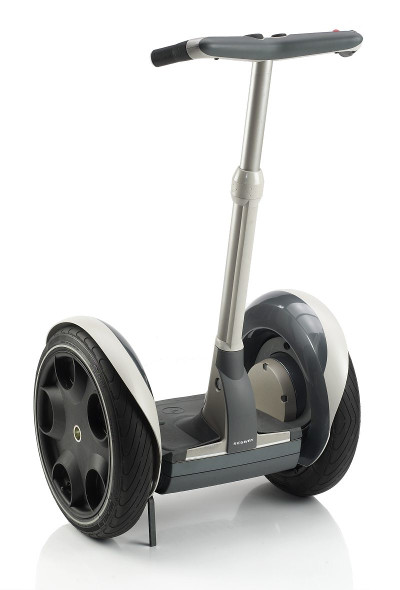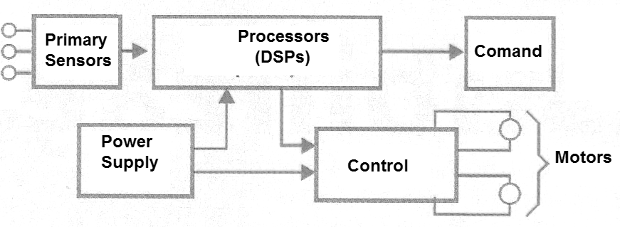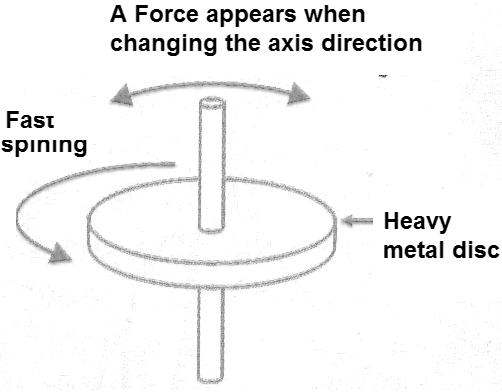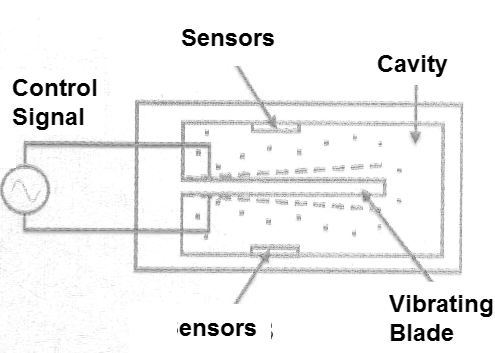The Segway Human Transporter (HT) or simply Segway is the first self-balanced human transport vehicle, that is, it maintains the balance without the intervention of whoever it transports.
Analyzing this vehicle we are amazed how it can balance itself on two wheels, and to move it we simply push the command forward or backward, which it takes care of changing the center of gravity of the set so that it can move without falling.
To understand how the Segway works and also other similar vehicles that are already starting to appear on the market, we must start from the way we ourselves, instead of two wheels, have two feet, balance and move.

Moving our body or our leg just to keep balance, “throwing” the leg forward so as to take a step. The movement must be very well synchronized with the sensing so that the balance while walking is maintained, because it depends on the speed, the inclination of the ground and even the fact that the person is carrying some weight.
This process that maintains the balance when we are standing and when we walk is called "dynamic stabilization" is the most critical point of the design of a vehicle like the Segway.
Only with the availability of appropriate sensors and especially of processors capable of working in real time with the signals of the sensors it became possible. This occurred with the advent of Digital Signal Processors (DSPs).
The DSPs can quickly process the signals from the sensors and determine how much movement the wheels should make forward and backward in order to maintain balance, and in a very fast way, enough to not allow time for the passenger to fall.
Sensors of position ,speed and even others are used in a very well planned way that gives the vehicle the unique features it presents.
Sensors and Processing
In Figure 1 we have a block diagram representing the functions we find in a typical two-wheeled vehicle.

The first block corresponds to the primary sensors consisting of a set of gyroscopes. Gyroscopes are used extensively in orientation and positioning maintenance systems as in the case of automatic pilots and anti-balancing devices for passenger ships.
A rapidly rotating disc tends to remain in its orientation, resisting any external force that tends to change its position, as shown in Figure 2.

Common gyros are made up of heavy metal discs which spin at extremely high revolutions, reaching more than 100,000 rpm in some cases.
For a vehicle like the Segway, such a gyroscope would be unfeasible, so the solution found is in the use of solid state gyroscopes. These vibrating plate devices are similar to the ones the nature used in dragonflies, thus consisting of a bionic solution.
A quartz blade which vibrates at an extremely high frequency, just like the disk of a gyroscope, tends to resist any change in the orientation of these vibrations, thereby generating a signal that can be picked up by an external circuit.
Any change on position of these sensors causes a reactive force and, at the same time, an external signal, as shown in Figure 3.

These sensors are extremely small, the size of common integrated circuits, and very sensitive too, which greatly facilitates their use in applications such as the Segway.
There is even a very interesting application for these sensors which deserves attention that is in the wireless mice which detect three-dimensional movements.
In two-wheeled vehicles, sets of these sensors are positioned to detect position changes on three axes, providing complex signals to the signal processor which then determines exactly which movements should be effected.
In the Segway, for example, there are 5 of these sensors, two of which are used to give redundancy to the information.
The signals from these sensors go to a system of processors that can be microprocessors connected in parallel or DSPs. In fact, the processing power required for such a vehicle is large, and the processors used resemble several PCs connected together.
The control signals are also fed to the processors, which correspond to pushing the control shaft back and forth when we want to move the vehicle even without tilting the body.
At the output of the processors there are control circuits that directly act on the engines which propel the vehicle and also provide additional information to the operator and other devices.
All this should be powered by a good battery, with the ability to carry the weight of the vehicle and the operator at a good speed. Rechargeable batteries with an efficient charging system should be used.
Of course the cost of such a vehicle is high, although in the future, like any high-tech device, mass production will make it accessible to many.
Today, only in special applications we find two-wheeled vehicles. For example, we can already see these vehicles in malls, airports, park and sidewalk policing. We can also see them in mall patrolling and security systems.
The transportation of small goods carriers in industries, large offices, shops and malls is another application. Finally, the ability to achieve a dynamic balance of a vehicle of this type, using only two wheels, makes it a very interesting solution for the individual transport, which certainly must be adopted in an intense way in the future.
2007 (revised 2017)



